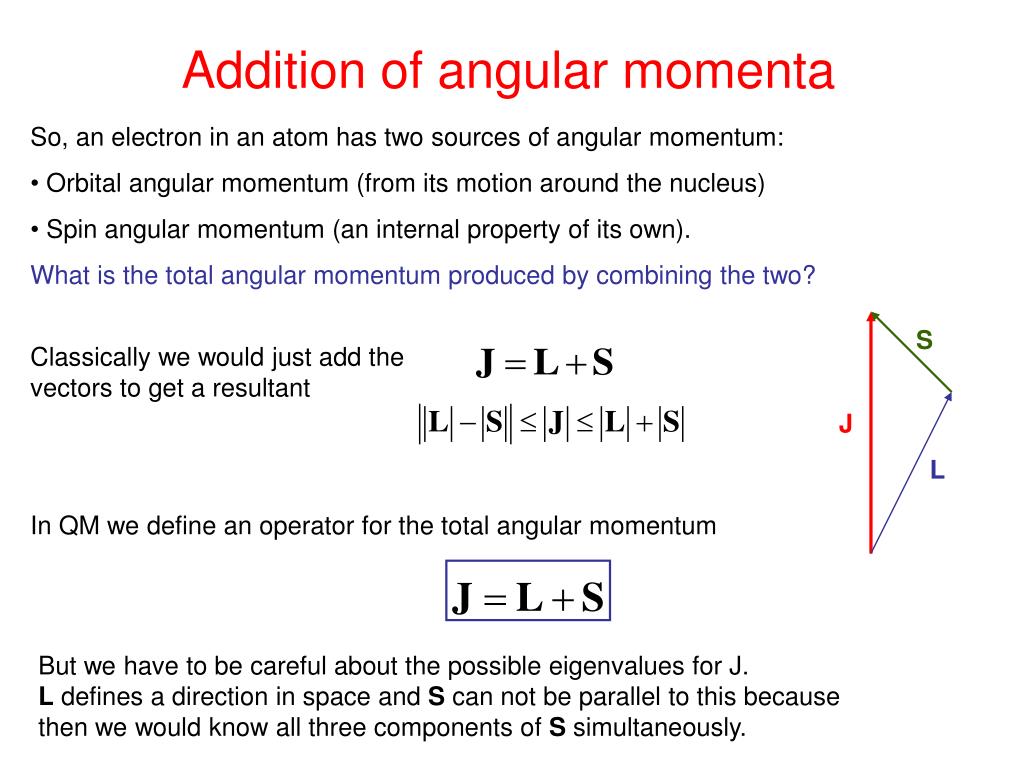
Since the electron displays an intrinsic angular momentum, one might expect a magnetic moment which follows the form of that for an electron orbit. The z-component of magnetic moment associated with the electron spin would then be expected to be

The total spin momentum has magnitude Square root of √S(S + 1) (ℏ), in which S is an integer or half an odd integer, depending on whether the number of electrons is even or odd. The possible value of the total spin angular momentum can be found from all the possible orientations of electrons within the atom. The spin quantum number is the fourth quantum number, denoted by s or m s. The spin quantum number indicates the orientation of the intrinsic angular momentum of an electron in an atom. It describes the quantum state of an electron, including its energy, orbital shape, and orbital orientation. Spin is one of two types of angular momentum in quantum mechanics, the other being orbital angular momentum. The orbital angular momentum operator is the quantum-mechanical counterpart to the classical angular momentum of orbital revolution and appears when there is periodic structure to its wavefunction as the angle varies.
but the measured value turns out to be about twice that. The measured value is writtenwhere g is called the gyromagnetic ratio and the electron spin g-factor has the value g = 2.00232 and g=1 for orbital angular momentum. The precise value of g was predicted by relativistic quantum mechanics in the Dirac equation and was measured in the Lamb shift experiment. A natural constant which arises in the treatment of magnetic effects is called the Bohr magneton. The magnetic moment is usually expressed as a multiple of the Bohr magneton.
Spin Angular Momentum Operator
The electron spin magnetic moment is important in the spin-orbit interaction which splits atomic energy levels and gives rise to fine structure in the spectra of atoms. The electron spin magnetic moment is also a factor in the interaction of atoms with external magnetic fields (Zeeman effect).
Spin Angular Momentum Of Electron
The term 'electron spin' is not to be taken literally in the classical sense as a description of the origin of the magnetic moment described above. To be sure, a spinning sphere of charge can produce a magnetic moment, but the magnitude of the magnetic moment obtained above cannot be reasonably modeled by considering the electron as a spinning sphere. High energy scattering from electrons shows no 'size' of the electron down to a resolution of about 10-3 fermis, and at that size a preposterously high spin rate of some 1032 radian/s would be required to match the observed angular momentum.